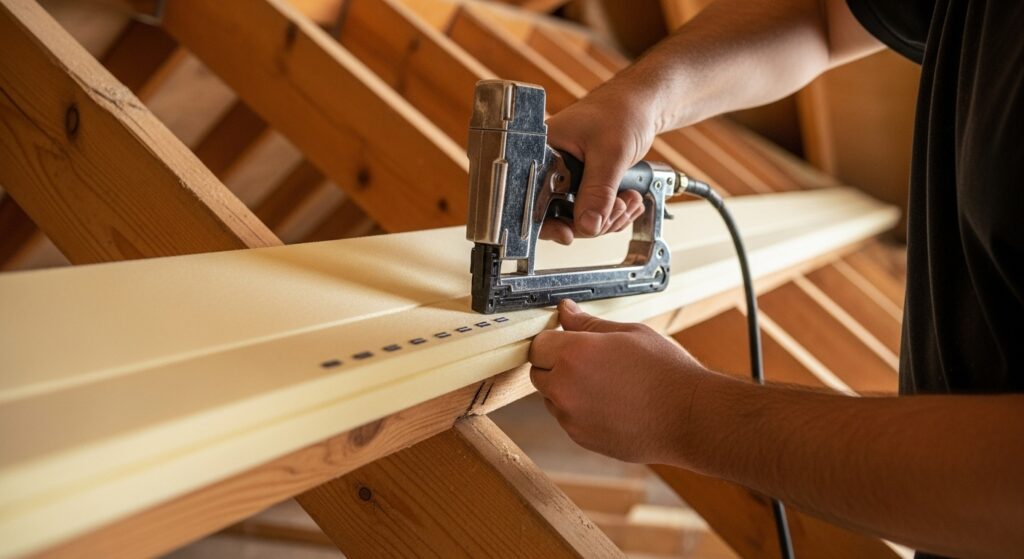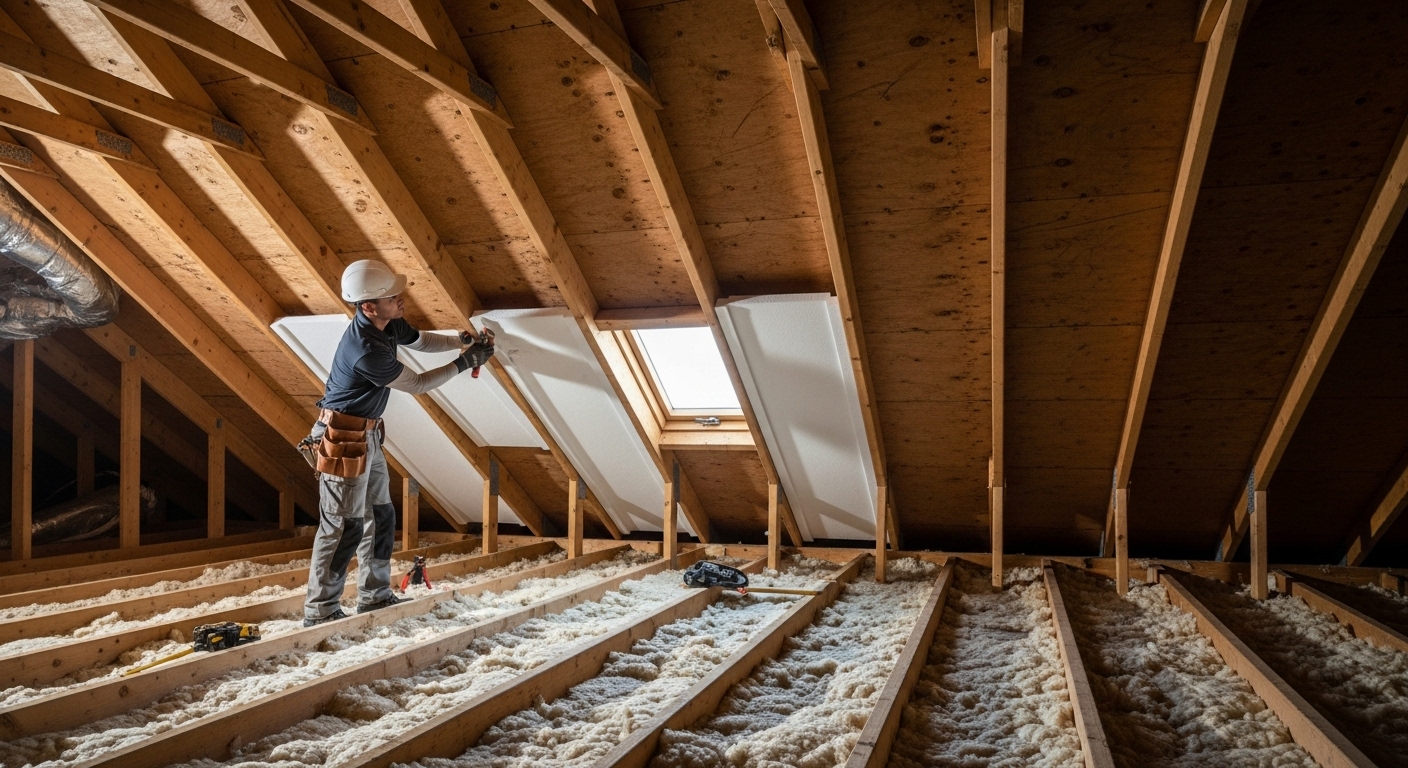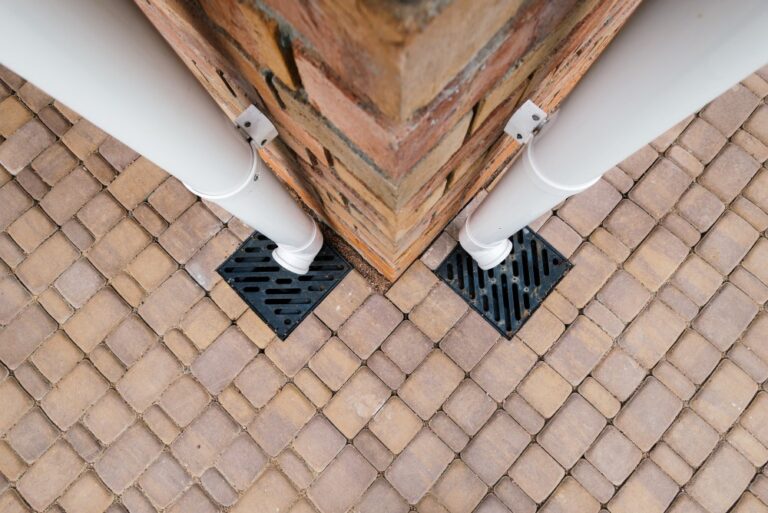The Complete Guide to Insulation Baffles: Maximizing Your Home’s Energy Efficiency
When Mike Thompson, a seasoned contractor from Minnesota, first encountered ice dams destroying gutters on a client’s home, he discovered the culprit wasn’t just poor insulation—it was improper airflow. “The homeowner had spent $3,000 on blown-in insulation the previous year,” Mike recalls, “but nobody installed insulation baffles. The insulation was blocking all the soffit vents, creating a thermal nightmare.” This scenario plays out thousands of times across America each winter.
What Are Insulation Baffles and Why They Matter
An insulation baffle, also known as a rafter vent or air chute, is a rigid or semi-rigid channel installed between roof rafters to maintain airflow from soffit vents to ridge vents. These seemingly simple devices solve a fundamental problem: blown-in or loose-fill insulation naturally wants to flow into every available space, including the critical ventilation pathways your attic needs to breathe.
According to the U.S. Department of Energy, proper attic ventilation can reduce cooling costs by up to 30% in summer months. Yet the North American Insulation Manufacturers Association estimates that 85% of homes lack adequate attic ventilation—often because insulation blocks the airflow paths that baffles would keep clear.
The Real-World Impact: Sarah’s Energy Bill Revelation
Sarah Martinez from Phoenix noticed her energy bills climbing despite installing new HVAC equipment. “My summer electric bills were hitting $400 monthly,” she explains. After a comprehensive energy audit revealed blocked soffit vents, she invested in proper attic insulation baffles installation. “Within two months, my bills dropped to $280. The baffles cost me $200 in materials, but I’m saving $1,440 annually.”

Types of Insulation Baffles: Choosing the Right Solution
Foam Insulation Baffles
Rigid foam baffles offer superior durability and won’t sag over time. Professional contractors prefer these for permanent installations, though they cost approximately 40% more than cardboard alternatives.
Cardboard Insulation Baffles
Budget-friendly and surprisingly effective, cardboard insulation baffles work well in dry climates. However, humid conditions can cause deterioration within 5-7 years. They’re treated with fire retardant and cost roughly $1.50 per linear foot.
Vinyl and Plastic Baffles
These offer a middle-ground solution—more durable than cardboard but less expensive than foam. They resist moisture effectively and maintain their shape under insulation weight.
How to Install Attic Insulation Baffles: A Professional’s Approach
Tom Rodriguez, who’s installed roof insulation baffles for 15 years in Texas, shares his methodology: “Most DIYers make three critical mistakes: insufficient baffle length, improper sealing at the soffit, and inadequate securing to rafters.”
Step-by-Step Installation Process
- Measure and Cut: Rafter insulation baffles should extend from the soffit to at least 2 feet above the exterior wall top plate.
- Secure Properly: Use 1-inch crown staples every 8 inches along the baffle edges. “I see too many installations where baffles shift because they weren’t secured adequately,” Rodriguez notes.
- Seal the Soffit Connection: Apply foam sealant where the baffle meets the soffit to prevent air leakage.
- Maintain the Channel: Ensure a minimum 2-inch air gap between the baffle and roof decking.

Common Installation Mistakes That Cost Money
The Minnesota Ice Dam Disaster
Jake Peterson thought he could save money by skipping baffle insulation in his Minneapolis home renovation. Two winters later, ice dams caused $8,000 in roof and ceiling damage. “The insurance adjuster specifically noted improper attic ventilation as the cause,” Peterson recalls. “Those $300 worth of baffles would have prevented thousands in damage.”
The Compressed Insulation Problem
When baffles insulation isn’t installed properly, blown-in insulation compresses against roof decking, reducing R-value by up to 50%. The Building Performance Institute found that compressed fiberglass insulation rated at R-30 can perform as poorly as R-15 when improperly installed.
Regional Considerations for Baffle Selection
Climate significantly impacts baffle choice. In humid southeastern states, foam baffles resist moisture damage better than cardboard alternatives. Conversely, arid southwestern regions can effectively use cardboard insulation baffles for decades without degradation.
Frequently Asked Questions
Q: How many attic insulation baffles do I need? A: Install one baffle between each rafter bay that has a corresponding soffit vent. A typical 2,000-square-foot home requires 20-30 baffles.
Q: Can I install baffles over existing insulation? A: Yes, but you’ll need to pull back insulation first, install baffles, then redistribute the insulation. This ensures proper airflow channel creation.
Q: Do cardboard baffles really work as well as foam? A: In appropriate climates, yes. Cardboard baffles provide identical airflow benefits but may require replacement sooner in humid conditions.
Q: What’s the minimum air gap needed above baffles? A: Building codes require at least 1 inch, but 2 inches provides optimal airflow for temperature regulation and moisture control.
Q: Can I make DIY baffles from other materials? A: While possible, manufactured baffles are fire-rated and designed for specific airflow requirements. DIY alternatives often fail to meet building codes.
The Economics of Proper Baffle Installation
Professional installation costs $3-5 per linear foot, while DIY installation runs $1.50-2.50 per foot in materials. However, energy savings typically recover costs within 18-24 months. The Lawrence Berkeley National Laboratory found homes with proper attic ventilation systems experience 15-25% lower cooling costs annually.
Maintenance and Longevity
Quality foam baffles last 25-30 years with minimal maintenance. Annual inspections should check for shifted baffles, compressed insulation, or pest intrusion. “I’ve seen 20-year-old foam baffles still performing perfectly,” notes contractor Mike Thompson, “while cardboard baffles in the same attic showed signs of deterioration.”
Making the Investment Decision
Lisa Chang, an energy auditor in Colorado, emphasizes the broader impact: “Proper baffle insulation doesn’t just reduce energy bills—it prevents ice dams, reduces HVAC wear, and improves indoor comfort. I’ve never encountered a homeowner who regretted installing quality attic baffles.”
The evidence overwhelmingly supports investing in proper insulation baffle installation. Whether choosing foam, cardboard, or vinyl options, the key lies in correct installation and appropriate material selection for your climate. The upfront investment pays dividends through reduced energy costs, prevented damage, and improved home comfort for decades to come.



